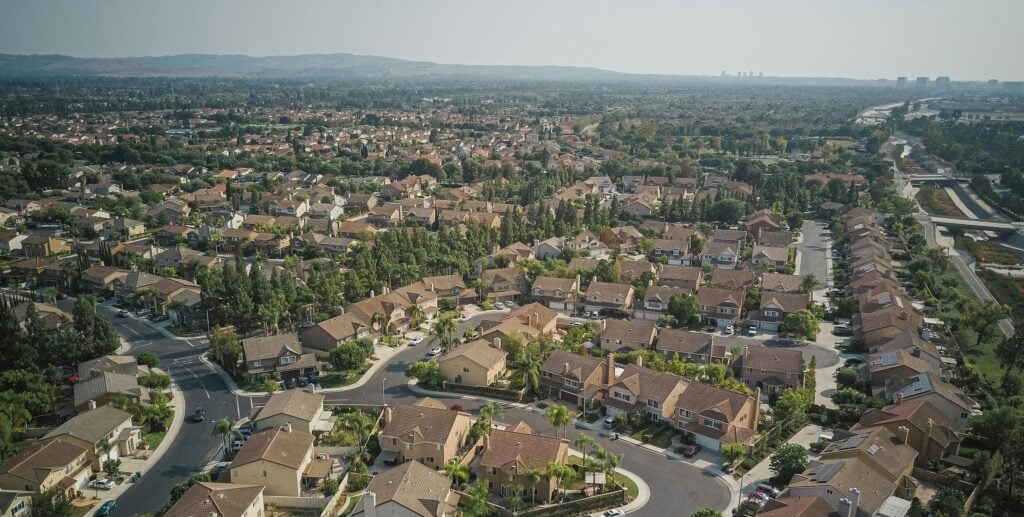Selecting the right market is crucial in real estate investing. Location determines all long-term income characteristics. Here are three valuable tips for finding areas that can enable financial freedom.
1. Define Your Goal and Work Backward
I always begin with my ultimate goal and work backward to my current position. This strategy enables me to craft a detailed, step-by-step plan that transforms dreams into reality.
So what’s the true aim of real estate investing? It’s to break free from the soul-crushing monotony of the daily grind and live on your terms.
To achieve genuine financial freedom, you need an income that satisfies three crucial requirements:
- Rental income must increase faster than inflation.
- There must be sufficient income to replace your current income.
- It must last throughout your lifetime.
The critical factor is the investment market/city. The location defines all long-term income characteristics, not the property.
2. Clarify the Criteria of a Great Market
A great market meets the three income requirements for financial freedom I listed.
Rental income must increase faster than inflation
To maintain your standard of living, your rental income must outpace inflation, providing the extra funds needed to cover rising costs due to inflation. If rents don’t outpace inflation, you’ll quickly be back in the soul-crushing monotony of the daily grind.
This means you need a market where rents have consistently outpaced inflation. But what drives such rapid increases in rents and prices? The answer is significant, sustained population growth.
There must be sufficient income to replace your current income
This typically means you’ll need multiple properties. You might assume that buying in low-cost markets would make this goal easier. However, the opposite is true—investing in low-cost markets costs far more than higher-priced, high-appreciation markets. Why?
Property prices are low in areas with little demand, which typically results in minimal or no appreciation. These markets often have static or declining populations. In such locations, all investment funds must come from your savings.
This raises two critical questions: How many properties will you need to achieve your income goal, and how much savings must you accumulate to acquire them?
Suppose you need $5,000 per month to replace your current income, and each property generates $300 a month after all expenses. To calculate how many properties you need:
- $5,000 / $300 = 17 properties
If each property costs $250,000 and your only acquisition cost is a 25% down payment, the amount of after-tax savings you’ll need is:
- 17 x $250,000 x 25% = $1,062,500
Accumulating $1 million in after-tax savings is beyond most people’s reach. That’s why investing in low-cost locations requires the most savings. However, there’s a much lower-cost method to acquire multiple properties.
What if you invest in a location with an average annual appreciation rate of 10%? Such areas, characterized by significant and sustained population growth, allow you to leverage the accumulated equity from appreciation through a cash-out refinance.
Suppose each property costs $400,000; your only acquisition cost is a 25% down payment. The cost for your first property will be:
- $400,000 x 25% = $100,000
If the property appreciates at 10% annually, how long will you need to hold it before a 75% cash-out refinance covers the $300,000 mortgage and provides the $100,000 needed for your next property?
- After year one: $400,000 x (1 + 10%)^1 x 75% – $300,000 = $30,000
- After two years: $400,000 x (1 + 10%)^2 x 75% – $300,000 = $63,000
- After three years: $400,000 x (1 + 10%)^3 x 75% – $300,000 = $99,300
So, after three years, you can obtain the down payment for your next property through a cash-out refinance, significantly reducing the need for additional capital from your savings. Once you acquire the second property, you’ll have two assets appreciating at 10% annually.
As your properties continue to appreciate, you can expand your portfolio with minimal additional capital from savings. Though properties in high-appreciation areas cost more than those in low-appreciation locations, rapid appreciation and cash-out refinancing enable you to acquire multiple properties for a fraction of the cost.
It must last throughout your lifetime
Your rental income relies on your tenants being employed at similar wages. However, nongovernment jobs are short-lived. The average U.S. company lasts only 10 years. Even corporate giants, such as those on the S&P 500, have an average lifespan of 18 years—and that number is falling.
With your tenants’ current jobs ending in the foreseeable future, everything hinges on replacement jobs offering comparable wages and requiring similar skills. Without replacement jobs, only lower-paying service sector jobs will remain.
Losing higher-paying jobs leads to declining area incomes and falling city revenues, reducing funding for schools, police, and other essential services. The result is increasing crime, more people moving out, and a dwindling population. This creates a downward spiral, from which few cities have recovered. You need a market that attracts jobs.
3. Use Elimination, Not Selection, to Find Performing Markets
The process is straightforward: Start with a list of potential cities and then apply additional requirements, removing any city that fails to meet them. This approach enables you to develop a shortlist of cities quickly.
Begin with cities that have a metropolitan population exceeding 1 million. Smaller cities often rely too heavily on a limited number of companies or lack the necessary infrastructure to attract new businesses.
Demand drives prices and rents, which is directly linked to population change. In areas experiencing significant, sustained population growth, prices and rents rise. Conversely, in areas where the population is static or declining, prices and rents stagnate or fall. Only invest in cities with significant and sustained population growth.
Companies (jobs) choose locations based primarily on three key factors:
- Low crime rate: Companies have significant flexibility when choosing investment locations. They are unlikely to select areas with high crime rates. You may want to avoid investing in any of these cities.
- Low operating costs: Companies do not choose locations with high operating costs. Three key indicators of high operating costs are state income tax, insurance costs, and property taxes.
- Pro-business environment: As the saying goes, “Money flows where it’s treated best.” Companies are unlikely to invest in cities where they must battle excessive regulations or face other antibusiness conditions.
At this point, you will have a short list of potential investment markets.
Final Thoughts
Choosing the right investment city is the most crucial decision you’ll make. The city’s current and future performance determines all long-term income characteristics of your investment. Fortunately, finding a city that meets all the requirements for financial freedom is a straightforward process.
Find the Hottest Markets of 2024!
Effortlessly discover your next investment hotspot with the brand new BiggerPockets Market Finder, featuring detailed metrics and insights for all U.S. markets.

Note By BiggerPockets: These are opinions written by the author and do not necessarily represent the opinions of BiggerPockets.



